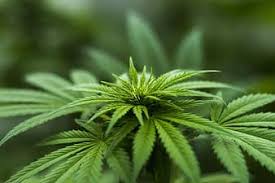The endogenous compound anandamide – often referred to as the body’s own marijuana – plays a role in erasing memories of a traumatic event. This was discovered by an international team led by Leiden chemist Mario van der Stelt. The results have been published in Nature Chemical Biology and may provide a starting point for the treatment of anxiety disorders such as PTSD.
Marijuana in your brain
When you smoke a joint, the active ingredient THC makes you feel relaxed. But there are also side effects, such as an increased appetite and loss of memory. “What about our body’s own marijuana? Does that have a similar effect?”, Professor of Molecular Physiology Mario van der Stelt found himself wondering five years ago. He decided to start a research line to find out, and received a Vici Grant from the Dutch Research Council in 2018. Two years later, in 2020, he and his team are the first in the world to inhibit the production of anandamide in the brain, thus revealing the true nature of this substance: it helps us forget traumatic memories and reduces stress.
Robotic arms to the rescue
The research started in 2015 when Elliot Mock, first author of the publication and a PhD candidate at the time, and master’s student Anouk van der Gracht managed to get their hands on the protein NAPE-PLD. This protein is responsible for the production of anandamide in the brain. The next step was to find a compound that stops this protein from working. Because the idea was that if you inhibit the production of anandamide, you can study its biological role.
Finding such a substance turned out to be no mean feat. Van der Stelt turned to the European Lead Factory in Oss, the Netherlands, which was co-founded by his research group in 2013 and specialises in the rapid screening of hundreds of thousands of substances. He first had to secure EU approval before a fully automated system could start searching for the compound that inhibits the protein. “Actually, this involved 350,000 mini reactions, each with a different substance,” says Van der Stelt. “They did so with the help of robot arms from the automotive industry. It took just three days to screen 350,000 substances, very impressive.”….







